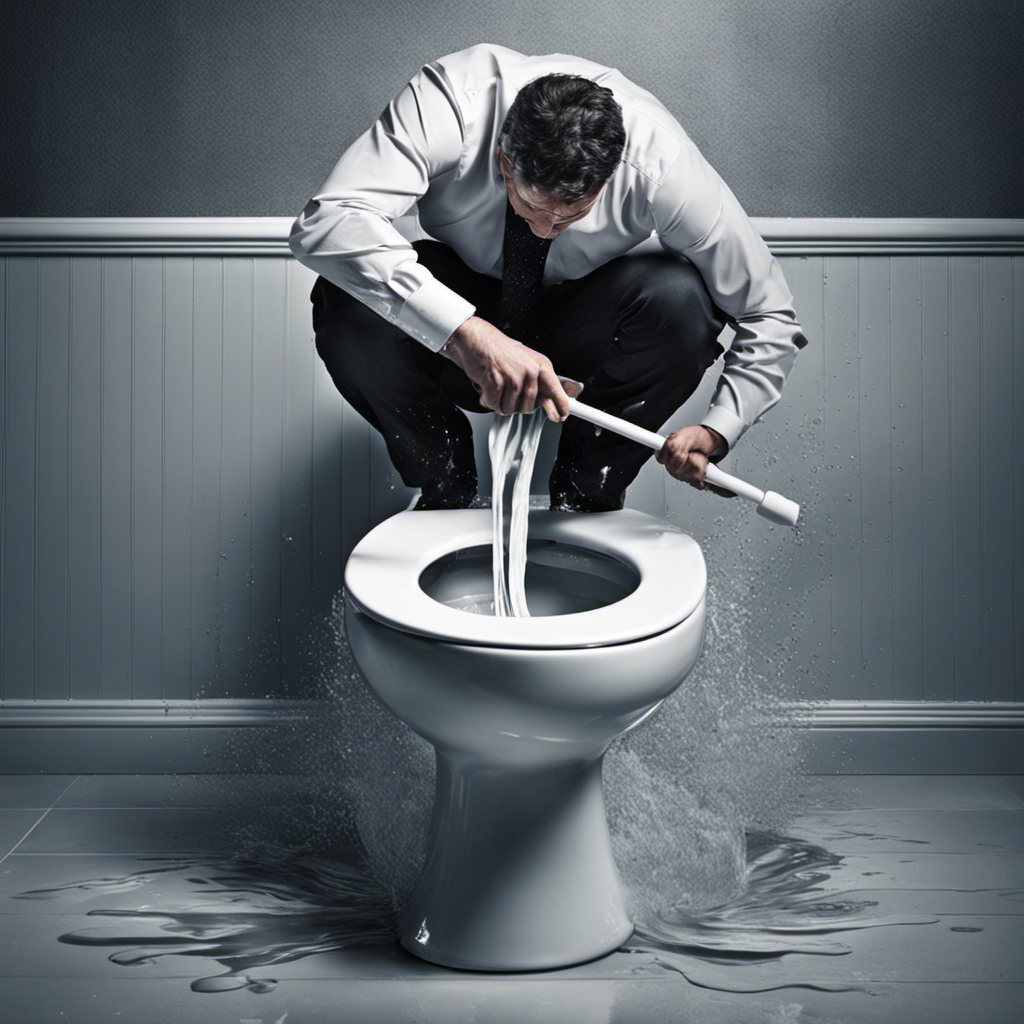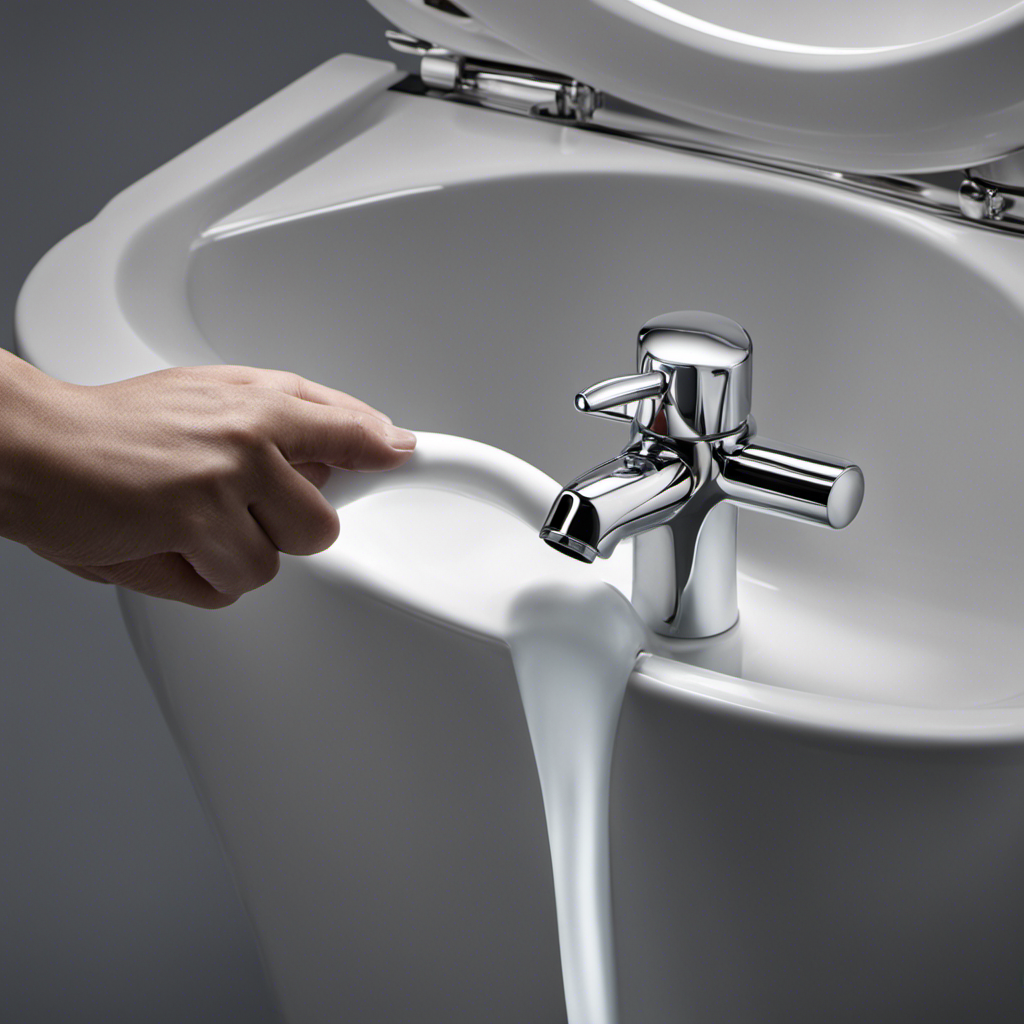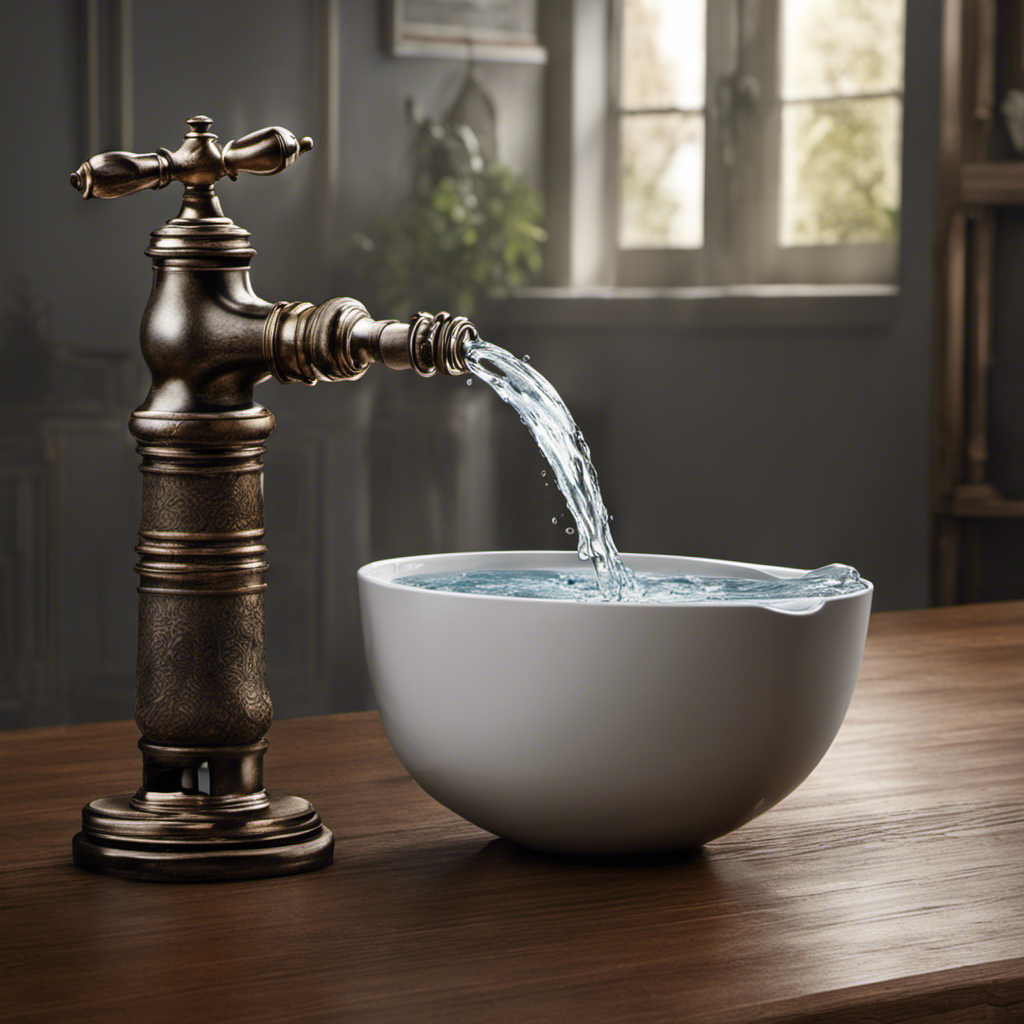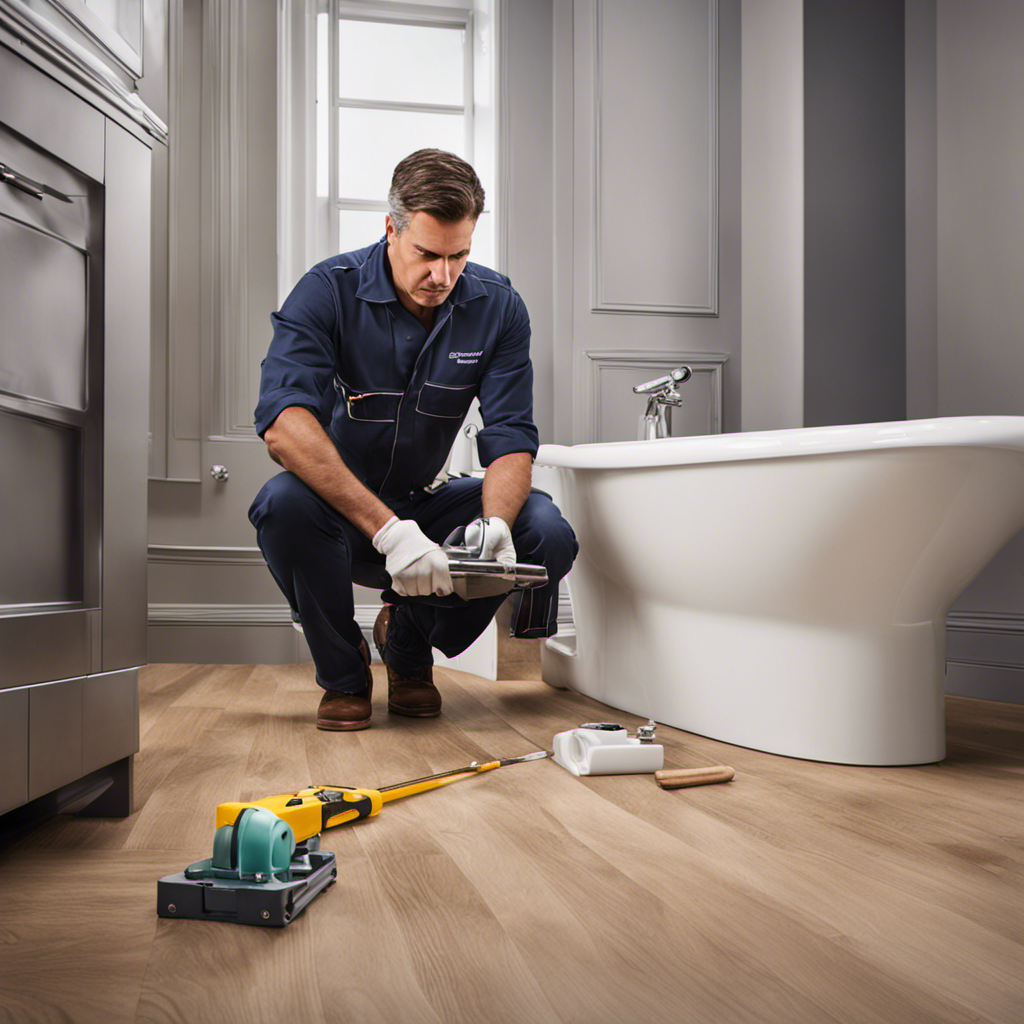I’ve been there before – standing in front of a stubbornly clogged toilet, plunger in hand, only to find that it’s not working as expected.
But fear not, because in this article, I’ll show you how to unclog a toilet when your trusty plunger fails you.
We’ll explore common reasons for a plunger not working, alternative methods to unclog a toilet, and the proper plunger technique for effective unclogging.
So let’s roll up our sleeves and get ready to tackle this messy situation head-on.
Key Takeaways
- Insufficient water in the toilet bowl can prevent the plunger from creating suction.
- Regular maintenance, such as using enzymatic cleaners or a DIY mixture of baking soda and vinegar, can help prevent clogs.
- Proper plunger technique, including ensuring a tight seal and applying firm and consistent pressure, is essential for effective unclogging.
- If DIY methods fail, calling a professional plumber may be necessary.
Common Reasons for a Plunger Not Working
One common reason why your plunger isn’t working could be that there is not enough water in the toilet bowl. When there is insufficient water, the plunger cannot create the necessary suction to dislodge the clog.
To prevent toilet clogs, it is important to avoid flushing excessive amounts of toilet paper or non-flushable items. Additionally, regular maintenance, such as using enzymatic cleaners or a DIY mixture of baking soda and vinegar, can help prevent clogs from forming.
When faced with a clogged toilet, DIY unclogging methods can be effective. Using a plunger correctly, ensuring there is enough water in the bowl, and applying firm and consistent pressure can help dislodge the clog.
If these methods fail, it may be necessary to call a professional plumber for further assistance.
Alternative Methods to Unclog a Toilet
There are several alternative methods you can try if the plunger isn’t doing the job.
One option is to use a toilet snake, also known as a drain auger. This tool consists of a long, flexible cable with a corkscrew-like end. To use it, you insert the cable into the toilet drain and rotate it to break up the clog.
Another option is to use a chemical drain cleaner. These cleaners contain powerful chemicals that dissolve or break down the clog. To use them, you simply pour the recommended amount into the toilet bowl and let it sit for the specified time. However, it’s important to follow the instructions carefully and use caution when handling these chemicals, as they can be harmful if not used correctly.
Proper Plunger Technique for Effective Unclogging
To effectively clear a stubborn clog, make sure you’re applying firm pressure with the plunger while maintaining a tight seal around the drain. Proper plunger technique is crucial for successful unclogging.
First, ensure that the plunger cup is completely covering the drain opening. This will help create a vacuum seal, maximizing the force applied to dislodge the clog.
Next, push down on the plunger with a steady, controlled motion. Apply enough pressure to compress the air in the plunger cup, then pull up quickly to create suction. Repeat this plunging action several times, alternating between forceful pushes and quick pulls.
It may take a few attempts, but with persistence, you should be able to clear the clog. Remember, regular toilet bowl maintenance and DIY plumbing fixes can help prevent clogs in the future.
Troubleshooting Tips for a Non-Functioning Plunger
If your plunger isn’t functioning properly, try checking for any visible damage or obstructions before attempting to use it. Sometimes, a simple fix can save you time and frustration.
First, inspect the rubber cup of the plunger for any cracks or tears. These can greatly reduce the plunger’s effectiveness. If you find any damage, consider replacing the plunger or repairing it with a patch kit.
Additionally, check the handle for any loose screws or weak connections. Tighten or replace as necessary.
To extend the lifespan of your plunger, it’s important to clean it after each use. Rinse it thoroughly with hot water and a disinfectant.
Finally, when it comes to choosing the right plunger, consider the type of toilet you have. A standard cup plunger works well for most toilets, while a flange plunger is best suited for toilets with an irregular drain opening.
Preventative Measures to Avoid Plunger Malfunctions
Make sure you regularly clean and inspect your plunger to prevent any potential malfunctions. Proper toilet maintenance is essential for preventing clogs and ensuring your plunger works effectively when needed. Here are some toilet maintenance tips to help you avoid plunger malfunctions:
| Maintenance Task | Frequency | Description |
|---|---|---|
| Clean Plunger | Monthly | Rinse the plunger thoroughly with hot water and mild detergent to remove any debris or bacteria. |
| Inspect Plunger | Quarterly | Check for any signs of wear or damage, such as cracks or tears in the rubber. Replace if necessary. |
| Store Plunger | After Use | After unclogging a toilet, clean and dry the plunger before storing it in a clean, dry area. |
Conclusion
In conclusion, unclogging a toilet can be a frustrating experience when the plunger is not working effectively. However, there are alternative methods such as using a toilet auger or a homemade drain cleaner that can help tackle the stubborn clog.
Remember to use the proper plunger technique, applying firm and consistent pressure to create suction. If the plunger is still not working, try troubleshooting tips like checking the water level or using hot water.
Finally, taking preventative measures like regular maintenance and avoiding flushing non-flushable items can help prevent future plunger malfunctions. As the saying goes, "An ounce of prevention is worth a pound of cure."










